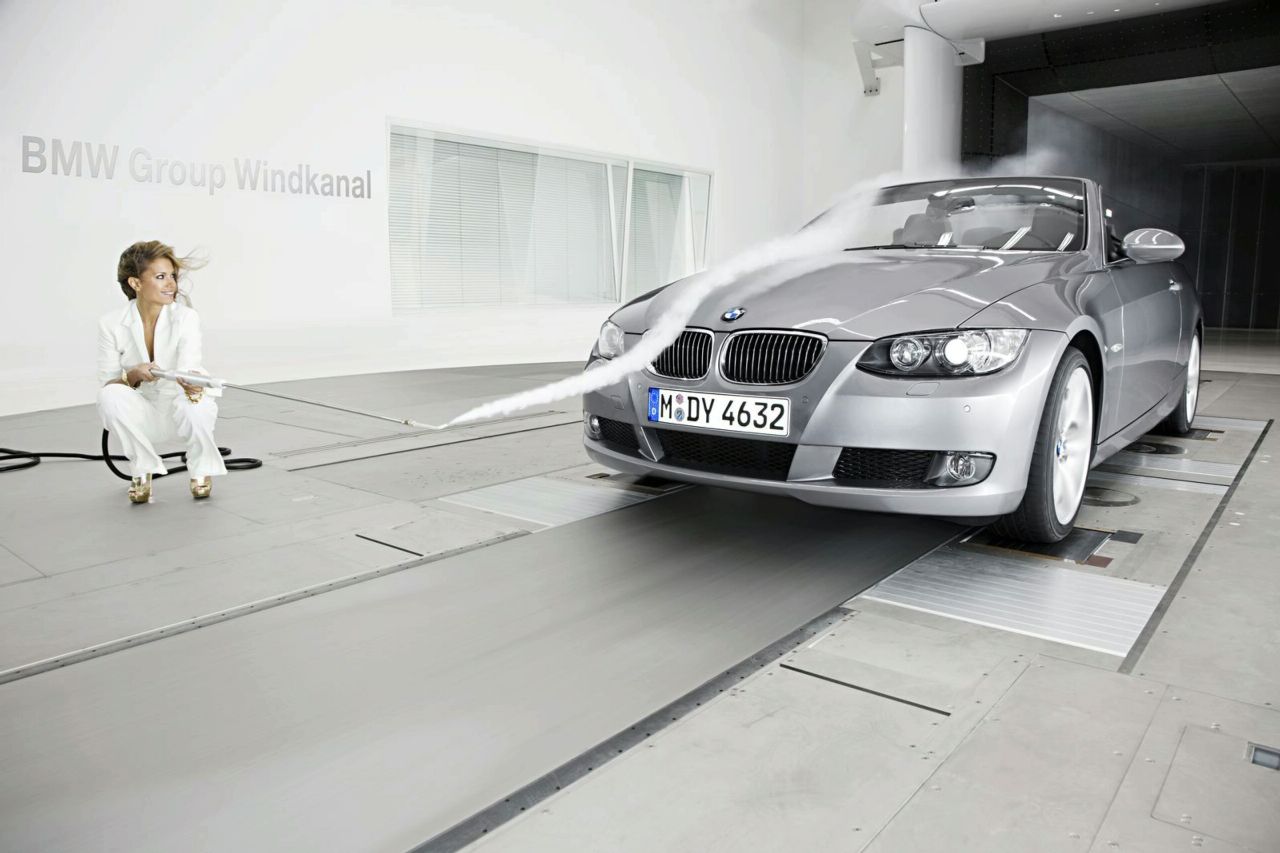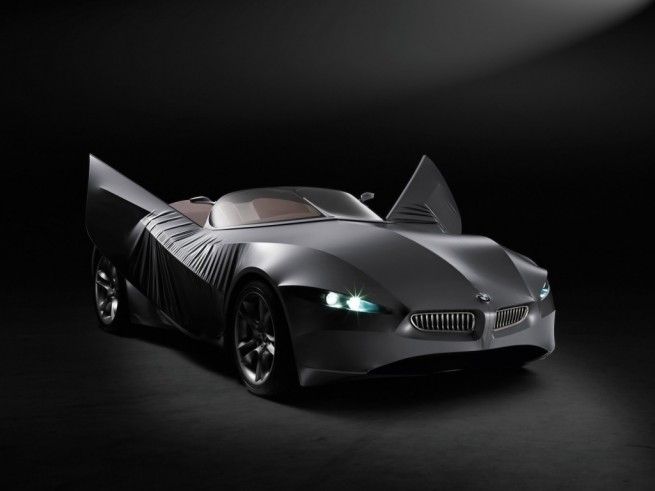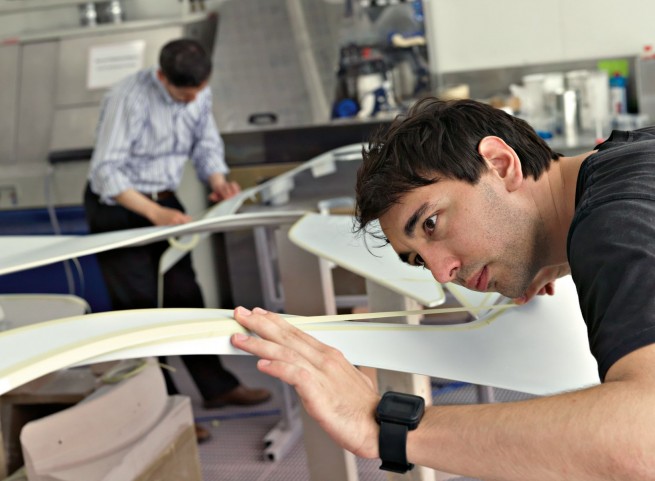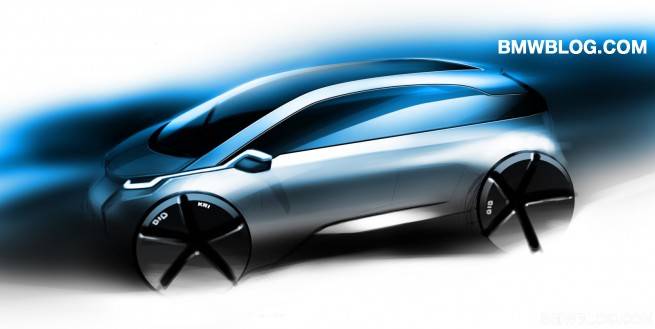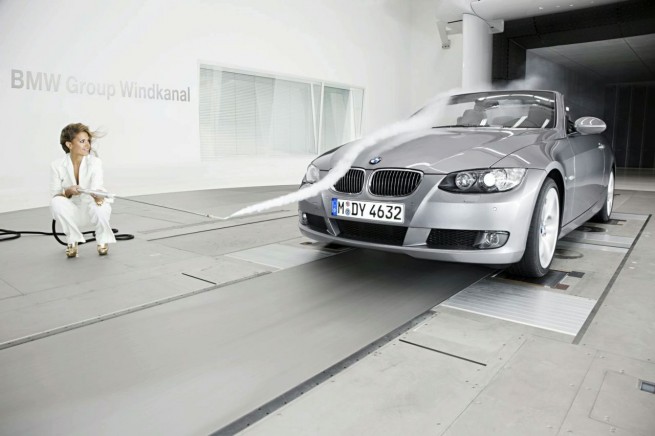Anders Warming fills the role of Director of Exterior Design at BMW, and besides his undoubted talent, the Denmark-born Warming is also one of the most passionate designers in the automotive world.
Warming started with BMW at its DesignworksUSA design studio in Newbury Park, CA. Graduate of the prestigious Art Center College of Design school, Warming designed the first generation E85 Z4 Roadster.
In his prosperous career, Warming also designed the GINA Light Concept, Mille Miglia 2006 Coupe Concept and was involved in the X1 Concept design.
Known as a fascinating and enthusiastic interviewee, Warming sat down with BMWBLOG and talked about BMW car design, future design languages and influences, design trends and internal competitions at BMW.
BMWBLOG: GINA and the Mille Miglia coupe were built using the old method of stretching a skin over a light tubular frame. The greatest proponent of that form of construction, if we call correctly, is Touring and their Superleggeras. What did you love about that construction technique and what was most challenging?
Anders Warming: There are two different concepts. GINA was based on a principle of using skin of a car in a different way and learning from the process of thinking how to do forms in different ways.
And we learned a lot from it. It was mainly a car we did for ourselves and we did it internally. We actually weren’t even planning to ever show the car. We had the car for many years just internally, looking at it and learning from it. Mille Miglia was a different concept. It was a homage to the great endeavors of racing in Italy.
Honestly, I’m not saying it was easy, but since it was straight from the heart like a dream car, it became pretty easy. We were fast and very excited about it. GINA took a lot more thinking. Don’t forget, also, on the interior of Mille Miglia we were using different materials like bent sheet metal that was perforated metal that made three dimensional forms and in that sense there was a little bit of GINA, actually a lot of GINA in the Mille Miglia.
BMWBLOG: What external factors are currently shaping automotive design? Eg. Crash safety standards, environmental factors, social trends, etc.
Anders Warming: Completely right. The one driving force I think as far as car design is going is sustainability. Sustainability in our view is the new premium.
“Premium” is an interesting word. What does “premium” mean? It means that it has something special that is kind of hard to quantify. A special aura about it. A premium product, whether it’s a handbag, whether it’s a musical instrument or car, if it’s premium it has something special. And our real inspiration for the future is for sustainability to be the new premium. We have done that with the Vision Efficient Dynamics, because it is a vision for how to make efficiency and dynamics exciting and kind of take the fear out of sustainability. Sustainability should be something we can celebrate.
It shouldn’t be something that is boring, it should be something wonderful.
Mario Majdandzic, Exterior Design Vision EfficientDynamics
BMWBLOG: And we certainly agree. Mario Majdandzic and Jochen Paesen have done a wonderful job with the the Vision Concept. (Note: Exterior, respectively interior designers for Vision EfficientDynamics Concept).
Anders Warming: These are hugely talented guys and BMW will make sure they will do a lot of exciting products for the future. We need these guys. In all honesty, they are hugely successful guys and let’s say that having had experience at other companies is always good, I have had other experiences too, and it actually brought new perspective.
They are really successful at BMW.
But on the other hand we are also realistic. BMW is car design. BMW is real work, hard work, a lot of discipline, a lot of concentrated focus design work and I believe that’s the true testament. It doesn’t mean that BMW is more fun to work at than other places, because it is really very focused work, but I do think it’s more fun what comes out of that process. A lot of people want to come and join us in the design team. I have a lot of applications. But on the other hand it’s also a compliment for the design team.
If more people want to join the design team that means that the team is doing a good job.
BMWBLOG: What are you most excited about in terms of future BMW design? Current design?
Anders Warming: Well, I’m most excited about the fact that we have the standing within BMW design to visualize the future. We are not a department within BMW that is just making the skin of the car and we never were. What I am excited about is that this is not styling. We are talking about design, and design is, the way I see it, the perfect balance between technology in any shape, whether it’s steel or hardware, software or plastic or other materials, technology and esthetics. That perfect balance between technology and esthetics is what we do and that’s why I am so excited about BMW design, because we are very close to the engineers and the marketing people.
We have a close tie to what the customer wants and we also know what we can build and we make it look good. At least, we hope so [laughing].
BMWBLOG: On that note, the new BMW X3 was just unveiled. What are your thoughts on the design?
Anders Warming: Honestly, I can only speak for myself and obviously I’m partial. I love the X3 to death.
Why? Because it’s the perfect balance between the urban agility that you want in an X vehicle, like the X1, very urban, very agile, and the elegance of an X5. The X5 grew because it needed the third row seat as an option, and now we have the X3 the right size, the right wheel size, the right proportion and I do believe we fixed the proportions.
We made the car sit better on its wheels. We made the wheels bigger. Bigger wheels with the same height makes the car sit better on its wheels. I think it’s a very exciting proportion. There is a lot we can talk about in terms of design. I’m very happy with the design and the surfaces, but let’s just say that the main premises of the new X3 are its perfect proportions.
I see it a little bit different. Again, I have a partial opinion. The original X3 was a home run. It’s a great car. It fit exactly what people needed. It sold in huge numbers when it first came out and it was the first in its segment, that size of car, and it did very, very well. I just believe that our job as designers is to make a successful product, and it was very successful. The only big thing was to fix the proportions. Get the wheels in the right place, get the shark nose in there and just make the car sit right on its wheels. Add a little bit more volume on the inside, but not too much, because we didn’t want it to become as big as an X5, so we kept the size overlookable, but I think it sits very well on its wheels.
BMWBLOG: Internal design competitions. Can anyone of your team members compete in a design contest?
Anders Warming: Anyone. In my team I have people that work on all product series and concept cars, and I have people that are more detail specific and I have a team that is geared toward M cars and M Sport Packages and all that.
So it is a mix of different groups. But, for example, I have a very good designer in the M team and if a designer from the M team wants to participate in sketches of concept cars, I would never deny him to do that. I would say: “Put your stuff on the wall. Talk to each other. Learn from each other.” Maybe this thing from an M sketch will make our concept for another idea even more valuable because we added the M experience into it.
So the more we can share, the more we can rotate, the more we do that. That’s within the team.
The second thing is that I’m a strong believer in rotation. People have an opportunity to work within all aspects of design (BMW, MINI, Motorcycle, Rolls-Royce) and keep rotating among those design departments and spreading out the experience.
It’s also not in Adrian’s [Von Hooydonk] interest to have all these little teams e.g. MINI team, BMW team etc., because it creates walls. BMW design is not about walls, it’s about sharing. You have to get things done, no doubt, but it is important to learn and share ideas. This seems a little philosophical, but this is what car design is, philosophical and emotional. You are only going to get the best car design if you make people feel happy and committed to their cars. Christian is proud of his interior and Nader is proud of his exterior.
You are only going to get beautiful cars that you and I like only if they are happy, if they like it.
BMWBLOG: Are there any new design trends that are becoming hallmark and unique to BMW?
Anders Warming: When BMW does a new generation of cars, it does not intend to change the industry. That is not our purpose. When we move on in form language and design, we do it for the purpose of developing the company to where the company needs to go, independently of the whole world.
We ask ourselves how can we do it better, how can we learn from this and how can we get the best out of it? That for me is very important. I believe BMW has done that. If you look back even before my time at BMW it was clear to see which direction BMW took. When we made huge moves and huge strides, it was because we needed to make those huge strides. We saw ourselves sort of indebted to make those changes happen, and now that we have made them, the steps that we are taking now is to build on that.
The last thing we want to do is change direction after we have started building a portfolio. With that in mind we built the first 6 Series and blasted the doors open and presented it. Over time people confirmed that they were pleased with the 6 Series, so the new 6 Series we would do, would be that but only better.
BMWBLOG: How important is the sporting nature of BMW cars to the current customer base? Is BMW still focused on sporting design, or have other attributes taken focus?
Anders Warming: Sporty, with all due respect, is sort of a bland term. You can describe an X or an M car as sporty. The words I like are “dynamic” and “agile,” and you cross-reference those terms from sports. A runner, a jumper or a swimmer is agile.
In other words, lightweight is for us dynamics. A 7 Series has to be light and agile. Same goes for the 6 Series and the 1 Series Active E. As you can see, it has an electric car.
How light and agile can the 1 Series electric get? It’s fantastic.
BMWBLOG: How will weight reduction influence the design of future BMW Cars?
Anders Warming: Hugely.
I believe we have to merge the concept of sustainability and sustainable materials for the future with light weight and that will be one of the huge further investigations. We have a huge drive within the company; we have a lot of knowledge for example in the M division with carbon fiber, etc. I think the future will be to merge these new technologies, these lightweight and strong technologies with more and more sustainability.
That has to be our goal.
BMWBLOG: How will the use of carbon fiber influence automotive design? Vehicle shapes?
Anders Warming: I think the use of carbon fiber is interesting because you can express a lot of structural rigidity with the material. The look of the material when it’s not painted is also really beautiful. Again, we are looking at technology and esthetics. Another advantage with carbon fiber is the fact that it is very, very light and it gives us more freedom to put things in other places.
For example, the thickness of a section would decrease giving you more space for ergonomics. With thin pillars you have more passage safety, etc. The third thing is that carbon fiber would allow us to work with tight radiuses. For example, if you bend sheet metal you get soft radiuses, but if you have carbon fiber you can actually work with sharp edges as far as form language goes.
Precision and control is BMW.
BMWBLOG: How extensively is BMW using its new rolling wind tunnel for new vehicle design?
Anders Warming: Very close. We are not only good friends of our aerodynamicists, because we work very closely with them, but they are right around the corner from us. Meaning we can just go to the wind tunnel. We can take our cars from the plate and put them into the wind tunnel, test them and bring them right back on the plate.
In the past we were not able to do that. We had to have a separate model, we had to have it separately milled, get the data, wait a week, get the sheet, get the points and the information and put it back in the model. Now we take the very model that we are working on and put it in the wind tunnel. This is very efficient and fun because you are closer to the aerodynamicists. They feel like they understand the designers.
We are a team and it feels really nice.
BMWBLOG: What sets BMW apart from all competition?
Anders Warming: BMW sets itself apart because it’s authentic with a true vision of true vision efficient dynamics. That for me says it all. The same thing goes for the other brands. If you look at the motorcycles, the MINI and Rolls-Royce, they are all clear authentic brands.
BMWBLOG: Describe BMW cars in one word.
Anders Warming: EfficientDynamics!
BMWBLOG: Where are you currently looking for inspiration in your designs?
Anders Warming: It’s hard to say. I can look in different places, but then again it is a personal preference of mine where I look. I think many designers in my team look for different inspirational sources and that’s why I think we meet at BMW and we do cars together, but everyone has their own passions next to car design, therefore I can’t really speak for the team and what people see. What I have seen is a common denominator for inspiration of car design from the outside.
The word is “storytelling”. Storytelling is not a book or an adventure, storytelling is what the customer needs when he buys a piece of furniture, a house, new music or a car or any object for that matter. Storytelling means that an object has to tell an authentic story about what it is all about.
What inspires me, I think for example in music, because I appreciate music and that is one of my inspirational sources, I really appreciate music that tells a story. For example, this was me and now I was delivered something, I’ve learned something, I’ve listened and now I’m further. Storytelling helps you learn in life and I believe that, that is an inspiration of mine. If I listen to new music I say: ”That’s new, that’s different, that stocks interest, etc.”, that is inspiration in reference to car design.
This is how we design cars at BMW. We don’t take a certain standard and say: “connect the dots, and boom, there is the car.” We ask: “what’s your story?” When some people present sketches within the team, it’s not about mine or Adrian’s opinion (even though Adrian decides at the end of the day, that’s clear), but about the question of what their story is?What makes that design better than any other design?
Why? Tell your story. When you look at a sketch you don’t think about what everyone else thinks about it. First, you as the designer have to like it and be proud of it. You have to feel that it moves you.
Anders, thank you for your time!


